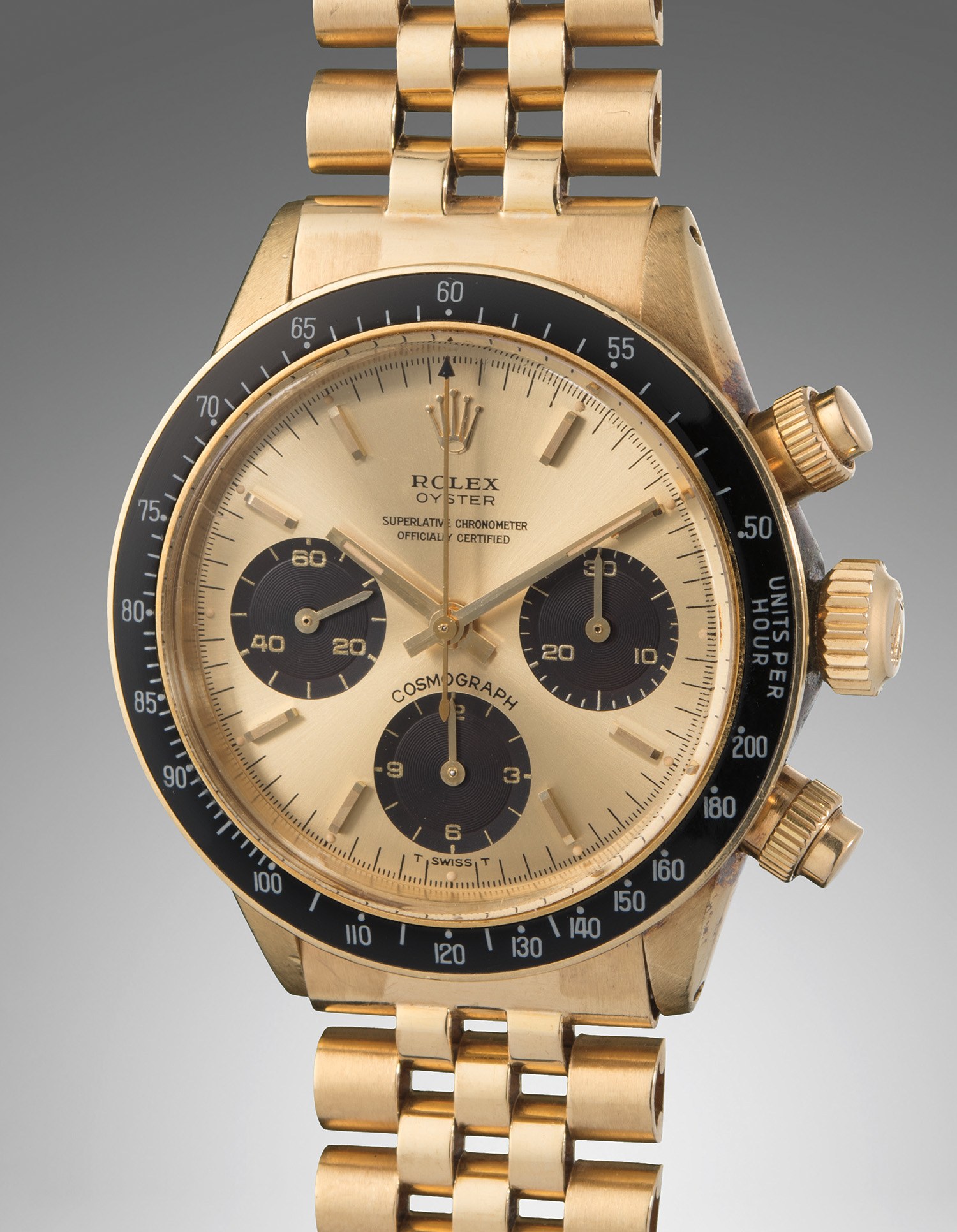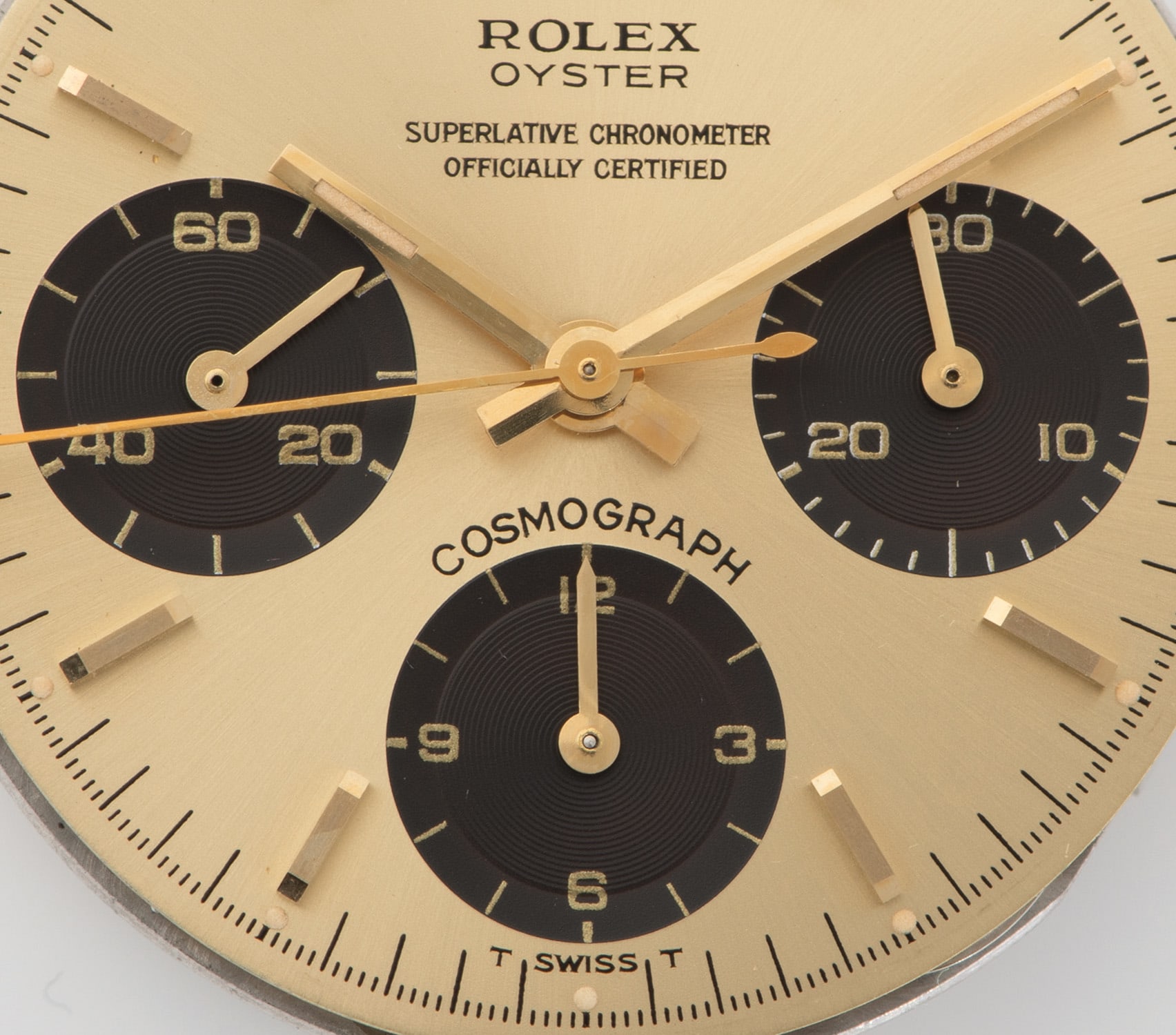





120
Rolex
Ref. 6263, inside caseback stamped 6238
Cosmograph Daytona, "Oyster-Split"
An important, very rare, and well-preserved yellow gold chronograph wristwatch with champagne dial displaying small "Oyster" designation and "floating scripts", accompanied by original boxes and guarantee
Full-Cataloguing
Rolex decided to obtain chronometer certification for all gold Daytona models beginning in the early 1970s, and began printing ‘Superlative Chronometer Officially Certified’ on the dials, while some early examples retained the previously used “3 liner” variation. One of the rarest variants is the present example, with the dial displaying Superlative Chronometer Officially Certified floating beneath “Rolex Oyster” at 12 o’clock, giving way to its name “Oyster-Split”.
An exciting find, this particular watch is the earliest known yellow gold 6263 with the SCOC indication on the dial. Research shows that less than ten yellow gold Daytonas (a combination of 6239s, 6262s, 6263s, and 6265s) have appeared publicly or in literature within the very specific serial number range that the present example belongs to – all around the 2.33 million sequence. With approximately 100 6263s and 6265s produced per year, less than 50 examples of reference 6262, and around approximately 100 precious metal 6239s and 6241s probably produced that year, it is likely that these yellow gold cases were produced in one single batch - of which the present lot is the earliest.
As demand for the Daytona has steadily risen over the past few decades, and scholarship has increased by leaps and bounds, these small details are sure to excite dedicated and discerning collectors. Well-balanced, with a seamless melding of luxury and sport, the contrasting gold and black design elements found on the present watch are enhanced by a gold Jubilee bracelet produced under license in Venezuela with a special construction. Retailed by Joyería Roca Hermanos in Venezuela, the watch further impresses with its originality and completeness as it remains fitted with its original Mark 1 pushers and is accompanied with its original guarantee, product literature, and boxes.
Rolex
Swiss | 1905Founded in 1905 England by Hans Wilsdorf and Alfred Davis as Wilsdorf & Davis, it soon became known as the Rolex Watch Company in 1915, moving its headquarters to Geneva in 1919. Like no other company, the success of the wristwatch can be attributed to many of Rolex's innovations that made them one of the most respected and well-known of all luxury brands. These innovations include their famous "Oyster" case — the world's first water resistant and dustproof watch case, invented in 1926 — and their "Perpetual" — the first reliable self-winding movement for wristwatches launched in 1933. They would form the foundation for Rolex's Datejust and Day-Date, respectively introduced in 1945 and 1956, but also importantly for their sports watches, such as the Explorer, Submariner and GMT-Master launched in the mid-1950s.
One of its most famous models is the Cosmograph Daytona. Launched in 1963, these chronographs are without any doubt amongst the most iconic and coveted of all collectible wristwatches. Other key collectible models include their most complicated vintage watches, including references 8171 and 6062 with triple calendar and moon phase, "Jean Claude Killy" triple date chronograph models and the Submariner, including early "big-crown" models and military-issued variants.